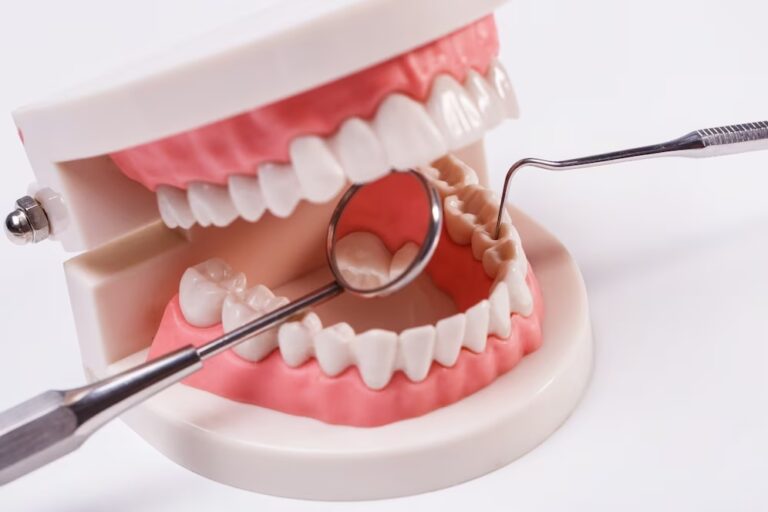Gum recession, a condition in which the gum tissue surrounding the teeth gradually wears away, can negatively impact both your oral health and the appearance of your smile. When gums recede, it can expose tooth roots, increasing the risk of sensitivity, decay, and tooth loss. The gradual nature of gum recession often makes it difficult for individuals to recognize the issue until it has advanced to a more severe stage. Therefore, understanding the potential causes, prevention techniques, and treatment options for gum recession is crucial in maintaining a healthy, vibrant smile.
At Colorado Gum Care Northglenn, CO, our dedicated team of dental professionals is committed to providing comprehensive, personalized care and education to our community members. In this guide, we will discuss the common causes of gum recession, preventative measures to protect your gums and oral health, and the treatment options we offer to address gum recession. By working closely with our skilled dental team, you can prevent gum recession, maintain a beautiful smile, and ensure your overall oral health.
1. Common Causes of Gum Recession
A variety of factors can contribute to gum recession, some of which may be within your control. Understanding the root causes can help you make informed decisions to protect your gum health. The most common causes of gum recession include:
– Periodontal disease: Also known as gum disease, periodontal disease is a bacterial infection that can cause inflammation, tissue damage, and eventual gum recession.
– Aggressive brushing: Brushing your teeth too vigorously or using a hard-bristled toothbrush can lead to gum recession, as well as enamel wear.
– Genetic factors: Some individuals are predisposed to gum recession due to their genes. Nearly 30% of people may develop gum disease, even with excellent oral hygiene habits, due to genetic factors.
– Hormonal changes: Women may experience hormonal fluctuations during pregnancy, puberty, or menopause, which can increase their vulnerability to gum recession.
– Teeth grinding or clenching: Known as bruxism, this habit can put excessive force on the teeth and gums, leading to gum recession.
– Tobacco use: Smoking and chewing tobacco can cause gum irritation, increase plaque buildup, and contribute to gum recession.
2. Preventing Gum Recession
Developing healthy oral care habits can be instrumental in preventing gum recession. Here are some helpful tips to protect your gums and maintain good oral health:
– Brush gently: Use a soft-bristled toothbrush and brush your teeth gently using small, circular motions.
– Floss daily: Flossing helps to remove plaque and food particles that can contribute to gum disease.
– Regular dental checkups: Schedule routine dental exams and cleanings every six months to ensure your teeth and gums stay healthy.
– Protect your teeth from grinding: If you suffer from bruxism, talk to your dentist about a custom-made night guard to wear while you sleep.
– Quit tobacco use: Avoiding tobacco products can significantly improve your gum health, as well as your overall health.
– Maintain a balanced diet: Consuming a diet rich in fruits, vegetables, lean proteins, and whole grains can support healthy gums.
3. Treatment Options for Gum Recession
Depending on the severity of your gum recession and the underlying cause, various treatment options may be recommended. Your dentist will work with you to develop a personalized plan to address your individual needs. Common treatment options for gum recession include:
– Improved at-home oral care: In mild cases of gum recession, adopting a better oral hygiene routine, such as using a softer toothbrush and learning proper brushing techniques, can help prevent further gum loss.
– Scaling and root planing: This deep cleaning treatment removes plaque and tartar from the tooth’s roots and smoothens the root surfaces to promote healing and discourage bacterial buildup.
– Antibiotics: If gum recession is caused by periodontal disease, your dentist may prescribe antibiotics to fight the infection and prevent further damage.
– Gum grafting: A soft tissue graft, or gum graft, involves taking a small piece of tissue from the roof of your mouth or another donor source and attaching it to the receded gum area, promoting natural tissue regeneration and enhancing the appearance of your smile.
– Pinhole surgical technique: This minimally invasive alternative to gum grafting involves creating a tiny pinhole in the gums and gently repositioning the tissue to cover exposed roots. This procedure often results in faster healing and less discomfort than traditional gum grafting.
4. Importance of Addressing Gum Recession
Addressing gum recession is essential for the following reasons:
– Tooth sensitivity: Exposed tooth roots can lead to increased sensitivity when consuming hot or cold foods and beverages.
– Tooth decay: Exposed roots are more susceptible to cavities, as they lack the protective enamel found on the rest of the tooth.
– Tooth loss: Severe gum recession can weaken the teeth’s support structures, resulting in tooth loosening and eventual tooth loss.
– Aesthetics: Gum recession can have a significant impact on your smile’s appearance, often making teeth appear elongated and leading to a less uniform gumline.
Take Control of Your Gum Health at Colorado Gum Care Northglenn, CO
By understanding the causes and risk factors of gum recession, you can take proactive steps to protect your gums and maintain a healthy, beautiful smile. At Colorado Gum Care Northglenn, CO, our expert dental team is committed to partnering with you to prevent and address gum recession, ensuring optimal oral health and confidence in your smile.
Schedule a consultation today to assess your gum health and create a personalized treatment plan tailored to your unique needs. Trust in the expertise and compassionate care of our dedicated dentist in Westminster, CO, to safeguard your smile and support your ongoing oral health and well-being.







